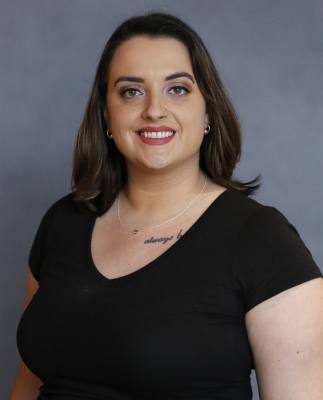During and after a Nov. 9 meeting, Friendswood ISD board members and parents discussed the merits and challenges of structural changes to the district’s virtual learning program.
Guidance from the Texas Education Agency released Nov. 5 gave the district significantly more options when it comes to virtual learners, officials said. But that guidance continues to change.
“That’s the taste and flavor of this year—just [change after change],” Board Vice President David Montz said at the meeting.
About 13% of the district’s students are learning remotely his grading period. Parents received an email midday Nov. 5 about the potential changes, which include creating a more restrictive process for students to be able to learn virtually, adding some at-home learning days for all students to provide teachers with planning time, and adjusting the model for secondary virtual learning.
Superintendent Thad Roher said in the email the district desires to provide the best possible instructional model but that districts are not required to offer virtual learning.
“It is a local decision to offer virtual learning to students,” he wrote, emphasizing that the TEA does not mandate a remote option. “Suppose a district does not elect to provide virtual learning. Students are free to withdraw and attend a public school that would accept them, or look at other options."
The board will vote on the proposed changes at a 6:30 p.m. workshop Nov. 16. Here is what parents and community members need to know ahead of the vote.
Underperforming virtual learners would be the first back to campus
A student with any class averages below a 70—or the equivalent with elementary progress reports—or a student with at least three unexcused absences would be required to return to in-person instruction under the district’s proposed plan.
Kim Cole, FISD executive director of secondary teaching and learning, said students were not consistently failing specific courses and added that the failures seem indicative of attendance and engagement in general.
According to information presented at the meeting, a beginning-of-year assessment for elementary learners shows that anywhere from a third to a half of kindergarten through second-grade students are falling below or well below benchmarks.
At the secondary level, 5%-9% of students learning on campus failed one or more classes in the first nine-weeks as compared to the 19% and 29% of virtual students who underperformed at Friendswood Junior High School and FHS, respectively.
Brent Erenwert, a Friendswood City Council member with two children learning virtually at FISD, said the district’s proposal came as an unpleasant surprise. Erenwert said he has heard parents plan to un-enroll their children at FISD if the district goes through with the changes.
“If you lose one person because of this, that’s one too many,” he said after the meeting. “We’re not going to live in a world where they’re going to make our decisions for us like that.”
Moreover, Erenwert said, FISD consistently receives awards and recognition for the quality of education it provides. He proposed that the district could and should be putting time and resources into virtual learning so it can excel in this area as well, not asking students to abandon it.
Before the meeting, 11th-grader Andy Fortner said in an email to Community Impact Newspaper virtual learners are “set up to fail."
The learning environment for remote students like himself, Andy said, is often confusing with teachers trying to instruct both virtual and in-person students, and he has unintentionally missed assignments or exams because schedules are difficult to follow. The Friendswood High School junior said it feels as if the district wants to force its remote learners back onto campus based on the way virtual students are treated.
“The school itself seems to be trying their hardest to get us back as well despite the ‘shocking’ sudden increase in cases a few weeks ago,” Andy wrote. “[The district] said any and all virtual kids are welcome to ‘come on back’ any time.
Several parents expressed concerns over how virtual attendance is tracked, as their children have often encountered logistical errors that have caused them to miss class. A student accrues makeup hours after missing more than 10% of days in a semester; some students have accrued more than 20 make-up hours, which signals that they have not been participating in classes, FISD’s Executive Director of Communications Dayna Owen said in a Nov. 11 email.
“We are not talking about a one or two missed-day cutoff for denying applications when it comes to attendance,” she wrote. “We are talking about serious attendance issues with makeup hours and/or failing grades. ... We can all agree that means the virtual learning option just isn't working for those students, and we want them back in class to help get them back on track.”
Families could seek medical exemptions
Under the district's proposed plan, ll 783 virtual learners, regardless of academic standing, would be required to fill out a form articulating why they wish to remain remote. District officials said the forms will give more insight into the community and provide a better understanding of the needs of remote learners and their families.
This process would include the opportunity to seek a medical exemption from returning to campus. Students, or a family member residing in the student's household, at higher risk for severe illness from COVID-19 due to an underlying health condition as designated by the Centers for Disease Control could file a medical exemption as part of the appeal process, Owen said via email.
FISD parent Amanda Manning said during the public comment portion of the meeting that her family constantly worries about exposing themselves or others to COVID-19 because of her husband’s job as a first responder. Sending her son back to lessons in-person would take a toll on his emotional health, she said.
“That is a huge weight for a junior in high school to have to carry with him,” she said.
After the meeting, Manning said she and her family are “cautiously hopeful” based on the plans presented.
FISD parent Sam Fortner—who has a background in the safety industry—said during public comment that the area’s rising rate of positive COVID-19 cases is a leading indicator the district could be approaching its limit with the number of in-person students. Campuses and classrooms move to virtual learning once there are a “moderate” number of cases—5%-10% of the population—in those spaces.
Other parents expressed concerns about whether the number of active COVID-19 cases across FISD’s six campuses can be accurately collected, since the district mostly relies on self-reporting of symptoms.
Roher acknowledged the recent increase in coronavirus cases but said the district will not be adding any new safety protocols. He said he walks the campuses weekly on Wednesdays and the community seems to be abiding by existing regulations.
“I wasn't expecting the level of compliance from our students that I’ve seen all the way through,” Roher said, adding that masking and distancing appear to be less consistent on buses.
In the last nine days, the total number of positive COVID-19 cases in Friendswood has increased from 877 to 929, which equates to five to six new cases a day, according to Galveston County Health District data. The city’s population is around 41,000.





